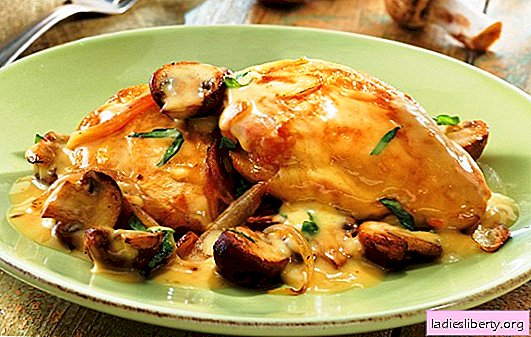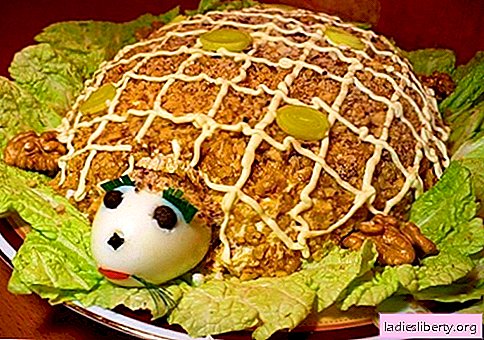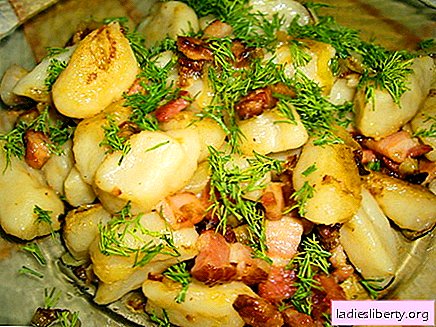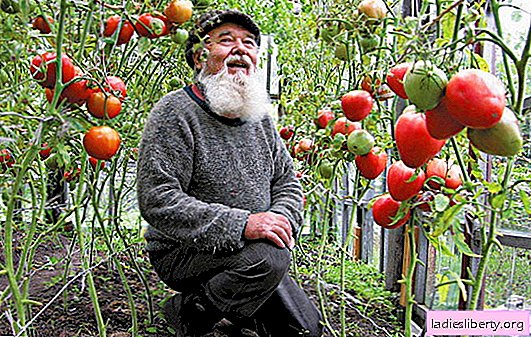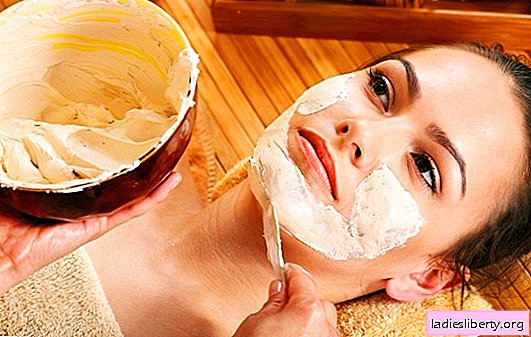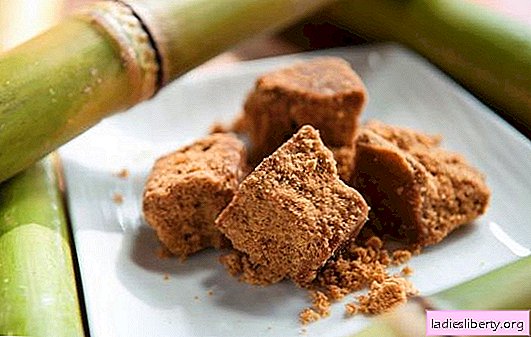
Cane sugar is useful or harmful - this is one of the most discussed issues both on the forums on good nutrition and among nutritionists. Is it true that replacing beet sugar with cane sugar can improve your body? Let's try to figure it out!
The history of sugar dates back several millennia, even before the advent of our era, this delicacy was enjoyed at the courts of the ancient rulers of India and China. In ancient India, cane syrup was used as a sweetener, which was called "honey without bees." Despite the rather laborious process of producing cane sugar in comparison with a product from sugar beets, it still remains very popular. Moreover, most people are sure that cane sweetness is more useful than beetroot.
Calorie Cane Sugar
In order to obtain a sweet product, sugarcane can be specially processed and then evaporated, the result of these procedures is brown unrefined sugar. If it is subjected to purification, then a snow-white product will be obtained at the output, which is no different from the beetroot brother.
INTERESTING! Beet sugar can also be brown, but unlike cane sugar, the unrefined product has an unattractive taste and smell.
By their calorie content, white beet sugar and cane brown practically do not differ - 387 kcal and 377 kcal, respectively. The caloric content of the products is also almost the same - both products consist of 99.91% white sucrose and 96.21% brown. Thus, consuming large amounts of any sugar can harm your teeth and body.
The benefits of cane sugar for the body
Unrefined cane sugar, in addition to its unusual color, also has the attractive smell of molasses.
Unrefined from molasses, in terms of vitamins and minerals, cane sugar is much more useful than beet sugar. So it includes (per 100 grams of product):
Calcium - 85 mg
Iron - 1.91 mg
Potassium - 29 mg
Phosphorus - 22 mg,
Sodium - 39 mg
Zinc - 0.18 mg.
While the indicators of white sweetness are 10 times less, and sodium phosphorus and zinc are completely absent.
Cane sugar can also boast of the presence of B vitamins in its composition: B1 -0.008 mg, B2 -0.007 mg; B3-0.082 mg, B6-0.026 μg, B9 -1 μg.
The amounts of vitamins may differ and are not regulated by standards, since the quality of sugar depends on the place where the cane grew. It is clear that drinking brown sugar as a "vitamin therapy" should not be, but it is better to drink a cup of tea and improve your body with vitamins, than just do harm and spoil your teeth.
INTERESTING! Among doctors in Asian countries, there is an opinion that with regular and normal consumption of cane sugar, the liver and spleen work better.
The benefits of cane sugar can be seen if you replace it with any other sweeteners - in this case, the risk of acute respiratory infections, sore throat and lung infections will be reduced.
Types of Unrefined Cane Sugar
The benefits and taste features of cane sugar also depend on its type:
1. Demerra - brownish-golden sweetness, the cheapest of cane sweets.
2. Muscovado - dark brown, sticky to the touch with a spicy caramel smell.
3. Turbinado - coarse sugar, brown in color, amenable to partial purification.
4. Barbados black - raw sugar, dark brown, almost black, soft and moist - it is the most useful cane sugar, as it contains the largest amount of molasses.
Unfortunately, finding the last type of cane sugar on the counter is extremely difficult.
INTERESTING! Cane sugar from different manufacturers may vary in taste and smell, as it depends on the locality and the size of the crystals.
There are specific varieties of brown sugar:
1. Special - each sugar crystal is covered with a thin layer of molasses, which is rich in many vitamins and minerals.
2. High-quality - made in Brazil, has centuries-old traditions and is one of the most expensive "sugar" products.
3. Special - due to the specific processing, sugar is absorbed by the body very slowly, so it does not affect the set of an extra century.
The benefits of cane sugar gur
Another type of cane sugar is Gur or Jaggeri sugar. It differs in an unusual way of production - from the trunk of sugar cane very slowly and at low temperatures the juice is squeezed. Sometimes Gur is called not sugar, but condensed cane juice. By consistency, it resembles a sorbet with sugar crystals. The product has a more intense caramel taste and smell.
In addition to the above vitamins and minerals, the composition of this product contains ascorbic and nicotinic acids and protein, which makes it even more useful.
INTERESTING! GUR is used in dietetics, since with proper nutrition, it helps to eliminate toxins and toxins from the body.
The real Gur is produced in India, so deciding on such a purchase, you should carefully read where the product was made.
Is there any harm from cane sugar
Despite all the attractiveness and unique taste features, cane sugar can be harmful. Dietitians have been arguing about the harm that cane sugar can cause to the human body and whether there are contraindications for its use for many years.
In fact, all the harm of cane sugar comes down to a restriction in its use, since its excess in the body leads not only to gaining excess weight, but also to an additional load on the pancreas, in addition, the blood is oversaturated with glucose. These factors can lead to a number of diseases, and if you use cane sugar excessively, it will lead to metabolic disorders and a decrease in the protective functions of the body.
IMPORTANT! People with diabetes can only use cane sugar after consulting with an endocrinologist.
Harm of cane sugar can also occur completely unexpectedly, since the product is often faked by adding molasses to regular refined sugar to create the desired color, so sugar does not carry any beneficial properties, and even low-quality dyes can be used.
In order not to feel the harm of cane sugar, you should eat no more than 60 grams of sweet product per day.
How to choose the right product and not get harm from cane sugar
In order not to make a mistake in choosing the right cane sweetness, you should first of all pay attention to the packaging, it should indicate that the product is unrefined. In addition, cane sugar is not a cheap product, 1 kg cannot cost less than $ 5, while beet sugar costs less than $ 1 per kilogram.
Real brown sugar, after its dissolution, slightly stains water, thanks to the molasses, which remains in its composition.
INTERESTING. In the 14th century, sugar was considered a real treasure and cost accordingly - for one pound of sugar you had to pay 44 pounds, which corresponds to $ 1 per 1 teaspoon these days.
When buying unrefined cane sugar, you should pay attention to the country of origin, this high-quality product is produced in the following countries: Mauritius, Argentina, Colombia, Malawi, Brazil, Paraguay, South Africa.

